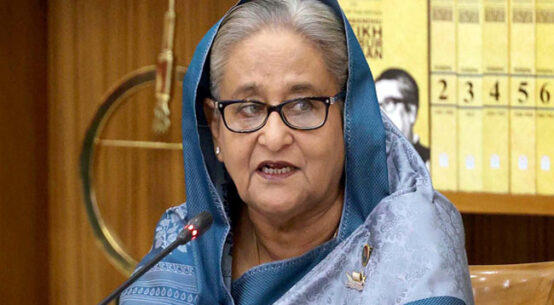
About 85 per cent of the employed people in the pre-Covid period remained unemployed for over a month for the pandemic and those reemployed now cannot make two ends meet, according to a study.
The CPD study report says though almost all of the laid-off people were able to find a job by January- February 2021, some 86 per cent of them reported that their incomes were not enough to afford daily necessities.
And more than 40 per cent of the employed population reported their employment situation worse than that in the pre-Covid period.
As a result, many families fell into distress and a large section of the unemployed had to switch status to agriculture worker even though the farm jobs have lower income, according to the survey.
“Most of the incremental employment was generated in the agriculture sector,” CPD distinguished fellow and core group member of the Citizen’s Platform for SDGs, Bangladesh, Prof Mustafizur Rahman, said while presenting the survey findings on Monday.
At the same time, a significant number of people left the services sector. “Given the nature of economic recovery, it is likely that structural transformation went backwards.”
Mr Rahman unveiled the findings on the concluding day of a two-day conference on ‘Bangladesh Emerging from the Pandemic: Coping Experiences and Policy Choices’, jointly organised by the Citizen’s Platform for SDGs and CPD at the Brac Centre Inn, Dhaka.
The session, entitled ‘Implication of COVID for the Labour Market’, was co-chaired by Asif Ibrahim, core group member of the Citizen’s Platform for SDGs.
Jahangirnagar University professor Sharmind Neelormi and senior research fellow of Bangladesh Institute of Development Studies Dr Minhaj Mahmud discussed the topic.
The study was carried out among 2,600 households in rural and urban areas from late January to early February this year.
About 45 per cent of households had lower income compared to the pre-Covid-19 period, Mr Rahman said.
“The decline in income has pushed a significant number of people into lower-income groups-indicating a higher poverty incidence,” he told the meet.
Despite absorbing a significantly higher number of jobs, hidden unemployment has increased in the agricultural sector as workers in the sector experienced the largest decline in average income and working hours, the study identified.
It says that income erosion had been taking place and a higher number of jobs failed to provide similar to pre-COVID or higher income.
It found out that the income between February 2020 and the survey period declined by 12.97 per cent for urban areas and 11.92 per cent for rural areas.
About 78 per cent of the surveyed individuals had reduced expenditure to cope with the impact of the COVID-19 pandemic, while 52 per cent changed dietary patterns involuntarily as the decline in income led to the lower expenditure of households, the report shows. Mr Rahman says there is an urgent need to enhance cash transfers to marginalised and affected households.
“Households urgently need to withstand the immediate loss of income and reduced expenditure. Higher consumption expenditure will also help to boost domestic demand and create opportunities for employment,” the economist says.
He recommended higher coverage and budgetary allocation for social-safety-net programmes in the form of cash transfers.
Investment in labour-intensive rural road and infrastructure would be beneficial to stimulate the rural economy, he said, suggesting a second stimulus package to support lower-income people to recover from the shocks of the crisis.
Speaking there, Mr Ibrahim said the government needs to provide additional incentives to labour-intensive sectors and resume labour-intensive infrastructure projects.


